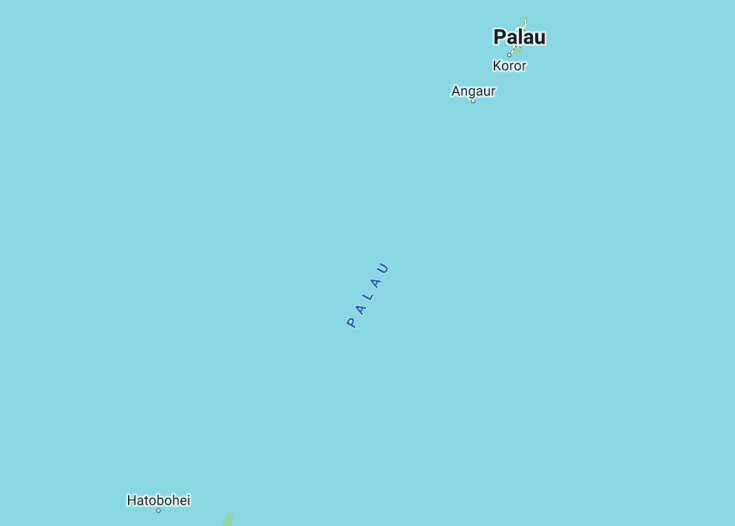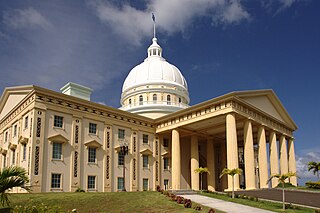Palau, a Western Pacific archipelago of over 500 islands, is a haven for biodiversity and a sanctuary for explorers. With its pristine marine ecosystems, Palau boasts a staggering concentration of coral species, colorful fishes, and the renowned Jellyfish Lake. Beyond underwater marvels, its emerald isles reveal historic sites from ancient civilizations and remnants of World War II battles. Designated a UNESCO World Heritage site, Palau’s marine sanctuary serves as a beacon for conservation, beckoning divers and nature enthusiasts to its idyllic shores and azure waters, where untouched nature meets unparalleled beauty.
Ensure you have a Rock Island permit; it’s mandatory for accessing many of Palau’s treasured sites.
Plan a visit during the Palau Challenge, a cultural festival showcasing traditional sports and crafts.
Palau: the Pristine paradise of the Pacific
| Capital | Ngerulmud |
| Time in Palau | GMT+9 |
| Language spoken | English, Palauan |
| Population | Approximately 18,000 (Source: World Bank, 2022) |
| Religion | Roman Catholic (45.3%) Protestant (34.9%) Modekngei (5.7%) Seventh-day Adventist (1.7%) Other or unspecified (12.4%) |
| Currency | United States dollar ($, USD) |
| Airports | Palau International Airport |
Palau, an archipelago of over 500 islands, is a gem in the western Pacific Ocean. With its mesmerizing underwater landscapes and rich cultural heritage, it offers a distinctive blend of natural wonders and traditions. Encapsulating a rich history that spans millennia, the islands have seen influences from various cultures, including the Spanish, Germans, and Japanese.
The early inhabitants, the Palauans, have left behind ancient stone monoliths, terraces, and other archaeological sites that narrate tales of a time gone by. The archipelago also bore witness to significant events during World War II, with remnants of battles and shipwrecks still evident underwater and on the islands, offering history enthusiasts a tangible connection to the past.
But beyond history, Palau’s main draw is undoubtedly its natural splendor. The Rock Islands, a collection of limestone or coral uprises, are renowned worldwide for their unique mushroom-like shapes, turquoise lagoons, and coral reefs. Divers and snorkelers are particularly attracted to the underwater wonderland, where they encounter a dazzling array of marine life, from manta rays to sharks, amidst vibrant coral gardens.
Furthermore, Palau’s commitment to conservation, exemplified by its designation of a vast marine sanctuary, ensures that its marine ecosystems remain pristine for future generations. This dedication, coupled with the warmth of the Palauan people and their vibrant traditions, makes the islands a haven for those seeking a unique, eco-friendly travel experience.
Where is Palau located?
Palau is located in the western Pacific Ocean, southeast of the Philippines and north of Indonesia, forming a mesmerizing archipelago of over 500 islands.
What is Palau famous for?
Palau is celebrated for its stunning Rock Islands, pristine marine biodiversity, world-class diving spots, and rich cultural and World War II history.
History
Prehistoric Times: The Early Settlers
The history of Palau is ancient, with archaeological evidence suggesting habitation as far back as 3,400 years ago. The earliest inhabitants are believed to have been of Melanesian descent, who later intermingled with incoming Micronesian settlers. The society they built was primarily matriarchal, with matrilineal descent playing an integral role in Palauan customs and traditions.
16th Century: European Exploration
Though the Spanish explorer Ruy López de Villalobos sighted Palau in 1543, significant European contact began in earnest in the late 18th century. British traders and explorers documented the islands, and soon after, other European powers, including Spain, took interest in the archipelago.
19th Century: Spanish Colonization
By the 19th century, Palau had come under Spanish sovereignty as part of the Spanish East Indies. The period witnessed the introduction of Christianity, especially Roman Catholicism, which remains a dominant faith in Palau today. In 1899, Spain sold Palau, along with the Caroline Islands, to Germany following its defeat in the Spanish-American War.
20th Century: Shifting Colonial Powers
Germany’s period of rule was brief. After World War I, Japan took control of Palau under the League of Nations’ mandate system. Japanese rule saw infrastructural development, with Palau becoming an important outpost in the Pacific. However, during World War II, the islands became a battleground. Following the war, Palau came under U.S. administrative control as part of the Trust Territory of the Pacific Islands.
1979-1994: Path to Independence
In 1979, Palau opted not to join the Federated States of Micronesia and instead pursued its own path towards sovereignty. The islands approved a new constitution in 1981, and after prolonged negotiations, the Compact of Free Association (COFA) was signed with the United States in 1982. However, it took multiple referenda and several amendments before the COFA was finally ratified by Palauans in 1993. On October 1, 1994, Palau officially became an independent republic, though it maintains a close relationship with the U.S. under the terms of the COFA.
1994-Present: The Independent Era
Since gaining independence, Palau has worked diligently to forge its path in the international community. Its stunning natural beauty, particularly the Rock Islands, has made it a coveted destination for eco-tourism. Palau has also been a vocal advocate for environmental sustainability, being among the first nations to create vast marine sanctuaries and championing the fight against climate change on the global stage. The country’s unique culture, rich history, and commitment to environmental stewardship make it a jewel in the Pacific.
Visit Palau
What to see and do in Palau
Palau offers a wide range of activities and attractions for visitors to enjoy. Here are some of the top things to see and do in Palau:
- Explore the Rock Islands and Jellyfish Lake: These natural wonders are a must-see in Palau. The Rock Islands are a group of small limestone islands, perfect for kayaking, snorkeling, and diving. Jellyfish Lake is home to millions of harmless jellyfish, providing a unique swimming experience.
- Visit the UNESCO World Heritage Site of Ngardmau Waterfall: Located in the lush jungle of Palau, this stunning waterfall is surrounded by beautiful vegetation and offers a refreshing place to cool off.
- Discover Palauan culture at the Belau National Museum: Learn about the history, traditions, and art of Palau at this museum, which houses a collection of artifacts and exhibits.
- Go diving or snorkeling in the vibrant coral reefs: Palau is renowned for its pristine coral reefs, which are home to a diverse range of marine life. Explore the underwater world and encounter colorful fish, sea turtles, and even sharks.
- Take a boat tour to the Milky Way: This unique natural phenomenon is a mud pool located in the Rock Islands. Visitors can cover themselves in the rejuvenating white mud, known for its skincare benefits.
Events in Palau
Palau hosts various events throughout the year that showcase its culture and traditions. The most significant event is the Independence Day celebrations on October 1st, which includes parades, traditional dances, and cultural performances. Another popular event is the Belau Games, a biennial sports competition where athletes from different states in Palau compete in traditional and modern sports.
Additionally, Palau celebrates traditional festivals such as the Palau Arts Festival, where local artists and artisans showcase their talents, and the Belau Modekngei Festival, which highlights Palauan traditional customs and practices.
Best time to visit Palau
The best time to visit Palau is during the dry season, which typically runs from November to April. During this time, the weather is sunny and rainfall is minimal, making it ideal for outdoor activities such as diving, snorkeling, and exploring the islands. The water temperature is also warm and pleasant, perfect for swimming and water sports.
However, Palau’s tropical climate means that it can rain at any time of the year, so it’s always a good idea to pack a rain jacket or umbrella, especially if traveling during the wet season.
Is Palau worth visiting?
Without a doubt, Palau is worth visiting for its stunning natural beauty, rich cultural heritage, and unique attractions. The Rock Islands, Jellyfish Lake, and vibrant coral reefs offer incredible opportunities for adventure and exploration. The Palauan people are warm and welcoming, and their commitment to preserving their environment and culture is truly inspiring.
However, it’s important to note that Palau is a remote destination and travel expenses can be high. Additionally, the limited infrastructure and services on some islands may not suit all travel preferences. If you’re looking for a bustling city or a resort-style vacation, Palau may not be the best fit for you.
Ultimately, Palau offers a once-in-a-lifetime experience for those seeking a unique blend of natural beauty, cultural immersion, and adventure. It is a destination that showcases the best of the Pacific and leaves a lasting impression on all who visit.













